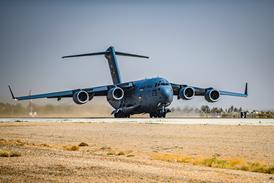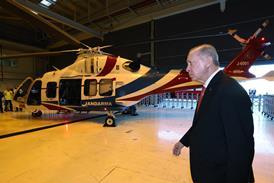The town of Blackstone, Virginia has become accustomed to the steady whir of the Lycoming EL-005 two-stroke, single-piston heavy fuel engine that powers the Textron Systems Aerosonde Mk4.7G.
The 36kg (80lb) small unmanned aerial system (UAS) showed up at the local Fort Pickett Virginia National Guard base in 2010 for developmental testing in restricted military airspace and stayed.
In 2012, the catapult-launched aircraft equipped with a retractable electro-optical/infrared (EO/IR) camera captured two major fee-for-service contracts with US Special Operations Command (SOCOM) and the navy for contractor owned and operated intelligence, surveillance and reconnaissance orbits.
Fort Pickett quickly became Textron’s Aerosonde training hub in 2012, and by 2013 the company stood up maintenance, repair and overhaul operations there. Instead of assembling the composite Kevlar aircraft in Hunt Valley, Maryland, where it produces the RQ-7B Shadow, the company thought it better to complete the entire process from assembly to flight checkout in Blackstone.
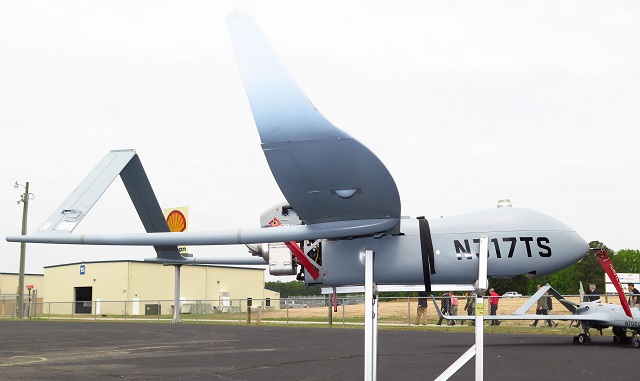
Textron Systems Aerosonde Mk4.7G
James Drew/Flightglobal
Now, with Pentagon contract renewals on the horizon and a strategic push back into the commercial and civil sectors where the Aerosonde started out - gathering data from the eye of hurricanes for the US National Oceanic and Atmospheric Administration (NOAA) - Textron is firmly planting itself in Blackstone by moving off-base to a modern training and logistics facility leased from UAV Pro.
Located at the Blackstone Army Airfield taxiway, the 1,366m² (14,700ft²) unmanned systems service and support centre was officially opened on 9 May by Textron Systems president and chief executive Ellen Lord.
The facility will double as a demonstration site, where prospective domestic and international clients can watch Aerosonde and the company’s new RQ-7B-based Shadow M2 fly.
Significantly, the Aerosonde and Shadow M2 types are permitted to operate in regulated, national airspace under US Federal Aviation Administration-approved certificates of authorisation, secured via the Virginia Tech Mid-Atlantic Aviation Partnership – an expansive, federally designated UAS test site. To date, Aerosonde has logged upward of 650 flight hours over 450 training and demonstration missions from the new location.
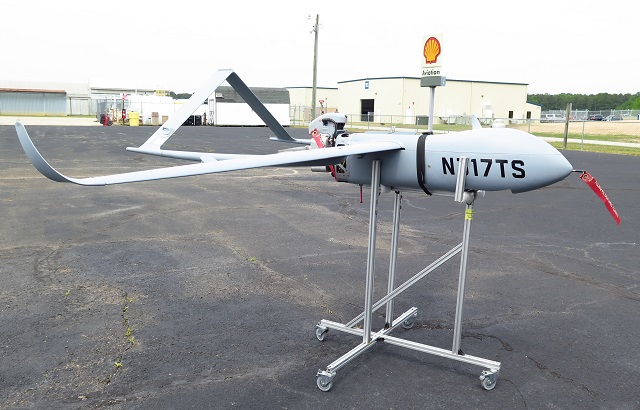
James Drew/Flightglobal
The expeditionary UAV was conceived primarily for civil applications in the late 1990s by Australian firm Aerosonde, which was acquired by AAI Corporation in 2006. Textron purchased AAI in 2007, and the tiny airframe quickly established itself as a formidable alternative to the now Boeing-owned Insitu ScanEagle. Both types continue to play an important role in counter-terrorism operations in the US Central Command area of responsibility and elsewhere around the globe.
Speaking at a media briefing after the ceremony in Blackstone, Textron Systems’ vice-president of small and medium endurance UAS David Phillips explained that Aerosonde is now flying some 4,000h combat hours per month with its Cloud Cap Technology EO/IR camera and various signals intelligence payloads.
Phillips says the indefinite delivery, indefinite quantity Medium-Endurance UAS II contract with the company’s largest customer, SOCOM, is up for renewal, and a source selection decision for a follow-on contract, called MEUAS III, is imminent.
Textron and Insitu submitted their competing bids for MEUAS III one year ago this month. The current contract with Aerosonde expires in July, but will be extended until a decision is made. If ScanEagle wins, it would significantly upset Textron’s operations.
Phillips is confident of a decision in Textron’s favour, but does not play down the threat. “It would certainly slow our pace,” he says.
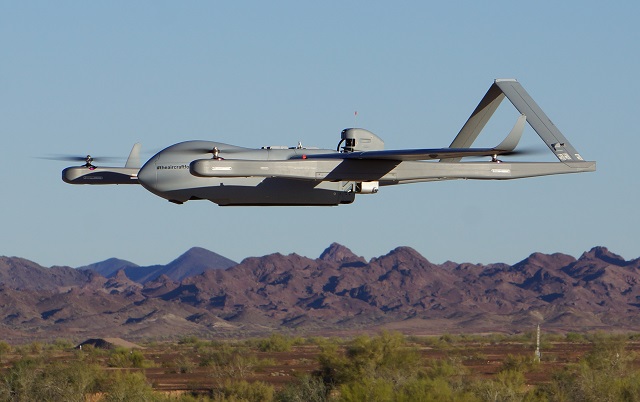
VTOL Aerosonde
Textron Systems
The company is also competing against ScanEagle for a US Coast Guard requirement to deploy aboard a national security cutter surface vessel. That could unlock greater opportunities in the future.
Aerosonde’s fee-for-service contract with the navy that started in 2012 is not up for renewal until 2018, but Textron will be looking to stare down any outside challenge there.
Phillips says Textron is banking on design changes like the hybrid quadcopter vertical takeoff and landing (VTOL) variant to keep Aeosonde ahead of its rivals. The company is also transitioning to an open mission system configuration, expanding the payload to 9kg (20lb) and boosting the power output to 200W.
Source: FlightGlobal.com





